Walking with a tour guide
See the sights you might miss without a local to show you around
Hello walkers and writers 👋🏻
The Writer’s Walk continues to introduce me to incredible people and I love that it enables me to share some of their stories and adventures with you. Most recently, I chatted with Rebecca Dawson – an amazing woman who wears lots of hats. She’s the owner of plus size outdoor gear store Vampire Outdoors, a former Chair of Trustees for the Ramblers and co-founder of Every Body Outdoors, a community action group fighting for clothing, gear and representation for plus size bodies in the outdoor movement. Please check it out if you haven’t seen it yet.
And now on to this edition on walking with a guide.
Walking
I’ve lived just off east London’s Brick Lane for 15 years (it’s the longest I’ve lived in one place in my entire life) and I know the streets so well I could probably walk them in my sleep. Or so I thought. It turns out that there are alleys I’d never stepped foot in, gardens I didn’t know existed, streets that had somehow slipped me by and stories that I thought I knew but have more to them than I realised. In recent weeks I’ve had my eyes and mind opened wider thanks to the people who’ve guided me around a neighbourhood that I thought I knew better than anywhere else in the world.
If I hadn’t joined a ‘netwalk’ led by Hana Sutch (Go Jauntly) and Daniel Raven-Ellison (Slow Ways/National Park Cities), I wouldn’t have learned that the oldest living Londoner is a tree or that there’s almost as many trees in London as there are people. And I wouldn’t have discovered a hidden park behind Spitalfields Market – which I’d never set foot in before despite walking past it thousands of times:
And if we hadn’t stopped to look at (one of my favourite) pieces of street art on Princelet Street, I wouldn’t have spotted the words on the road in front of it, which another person in the group pointed out. (To be fair, despite the double yellow lines, there’s often a car parked in the spot where the words are, which might explain why I missed it!)
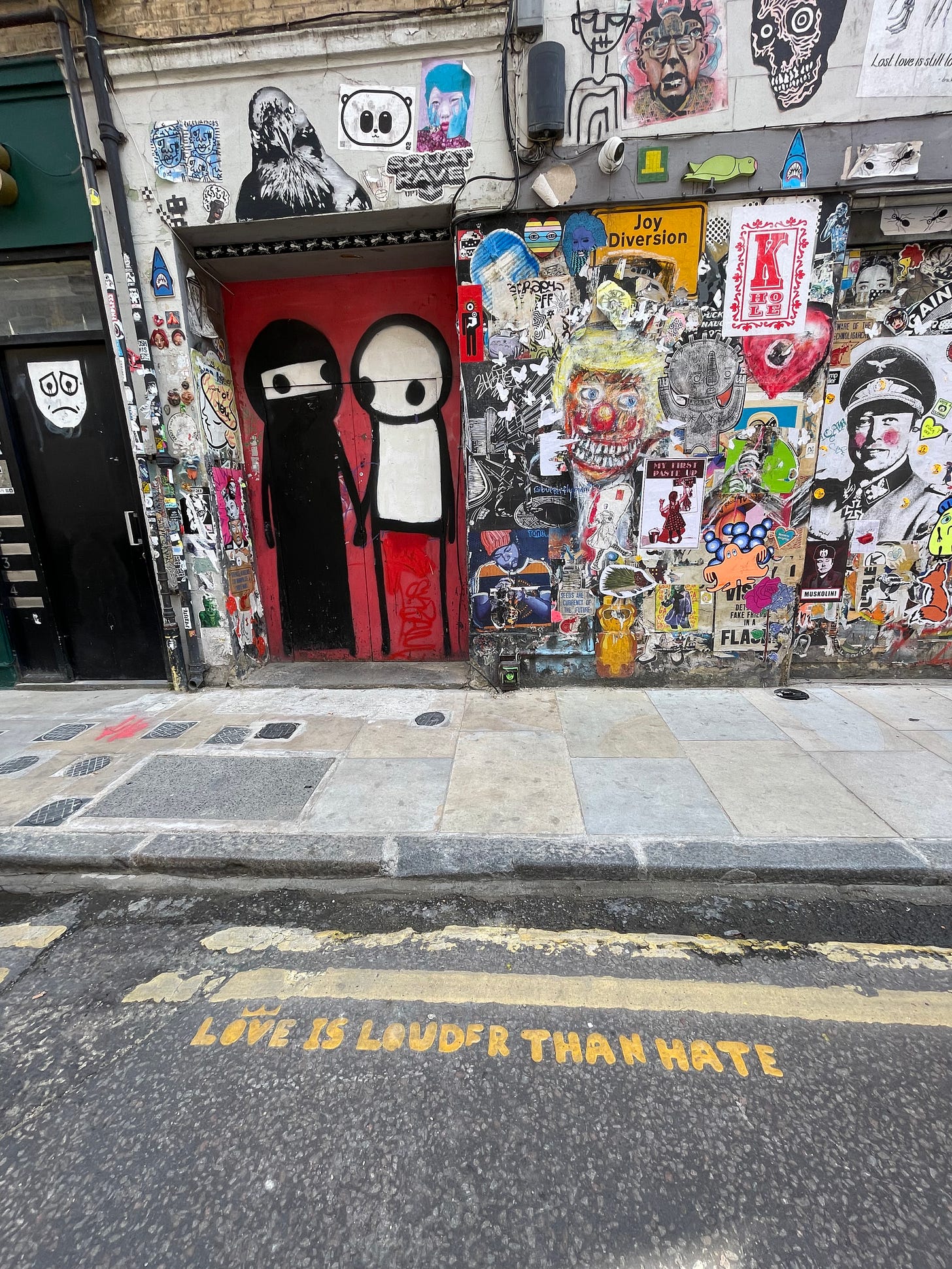
If I hadn’t joined The Gentle Author’s Tour of Spitalfields, I wouldn’t have learned that the area around Spitalfields Market was once a Roman cemetery with tombs that lined what is now Bishopsgate, or that when you walk through the corporate plaza, Bishops Square, you’re walking on the bones of the dead, as more than 18,000 human remains were removed from the site when it was redeveloped.
And if The Gentle Author’s1 story about Brick Lane’s history of migration hadn’t continued, I wouldn’t have learned that the word ‘refugee’ was brought to Brick Lane by the Huguenots. Its origin is the French word ‘réfugié’ which specifically refers to the Protestants who fled France following the revocation of the Edict of Nantes in 1685.
Going beyond Brick Lane, I’ve discovered other corners of the city, and their stories, by walking with guides. If I hadn’t joined Jonnie Fielding, who runs Bowl of Chalk, on a wander around St Paul’s I wouldn’t have learned about this magnificent tree. The Cheapside plane is one of the Great Trees of London and is a rare piece of greenery within the otherwise grey of the Square Mile. It’s survived bombs, fires and, amazingly for an area where buildings outpace the trees in both number and height, the eager grasp of developers.
And if I hadn’t had the chance to go on a walking tour with a street artist a few years ago, I’d have probably missed the work of Ben Wilson – known as the Chewing Gum Man. Ben turns discarded chewing gum into miniature works of art – a painstaking endeavour, which takes hours of work and involves heating the gum with a blow torch, before painting it and sealing with lacquer.
Tip: head to the Millennium Bridge and look down and you’ll see dozens of Ben’s artworks beneath your feet.
If I hadn’t joined Frank Molloy on one of his walks, I wouldn’t have known that London’s ‘lost’ River Fleet rushes the city and you can hear it beneath this unassuming grate in the pavement at the corner of Back Hill, Warner Street and Ray Street. It’s surprisingly loud, too!
And if I hadn’t signed up to a photography tour of one of my favourite places in London, the Barbican, I wouldn’t have started to look at things from different angles…
… or found different ways of framing what I see around me.
Which in turn helped transform my walks into exercises in noticing the world.
So my invitation this time is to go for a walk with a tour guide to see what you discover along the way. Here’s a few tips:
Choose a walk with a theme that interests you, like art, history, architecture, photography, nature, and so on
Smaller groups are better (in my opinion), so ask the guide how many people they take
Most walks go ahead whatever the weather, so be prepared for rain, shine and anything in between
Pop to the loo before it starts – you might not get chance during the walk itself
Bring water/a drink unless the walk includes a stop for refreshments
Look out for walking tours at festivals or conferences
Look for tours close to home – you never know what you’ll discover on your doorstep when you explore it through someone else’s eyes (and stories!)
Don’t let the potential cost put you off – many people and organisations offer free guided walks
Get there early – most tours start promptly and guides usually can’t wait for latecomers
Ask questions, chat with other walkers and have fun
Writing
We have a super simple writing prompt this time:
What was the most enlightening thing that you learned from your tour guide?
As always, I love hearing about your walks, so please share what you find in the comments.
Happy walking and writing until next time.
Sarah
More from The Writer’s Walk
If you enjoyed this edition, check out Walking to find treasure, the edition on geocaching – an activity that often includes a self-guided ’tour’ of an area where the caches are hidden, together with details of its history and stories.
When you take The Gentle Author’s Tour of Spitalfields (see top pic) you get a printed map, drawn by Adam Dant, which includes many of the stories you learn about on the tour.


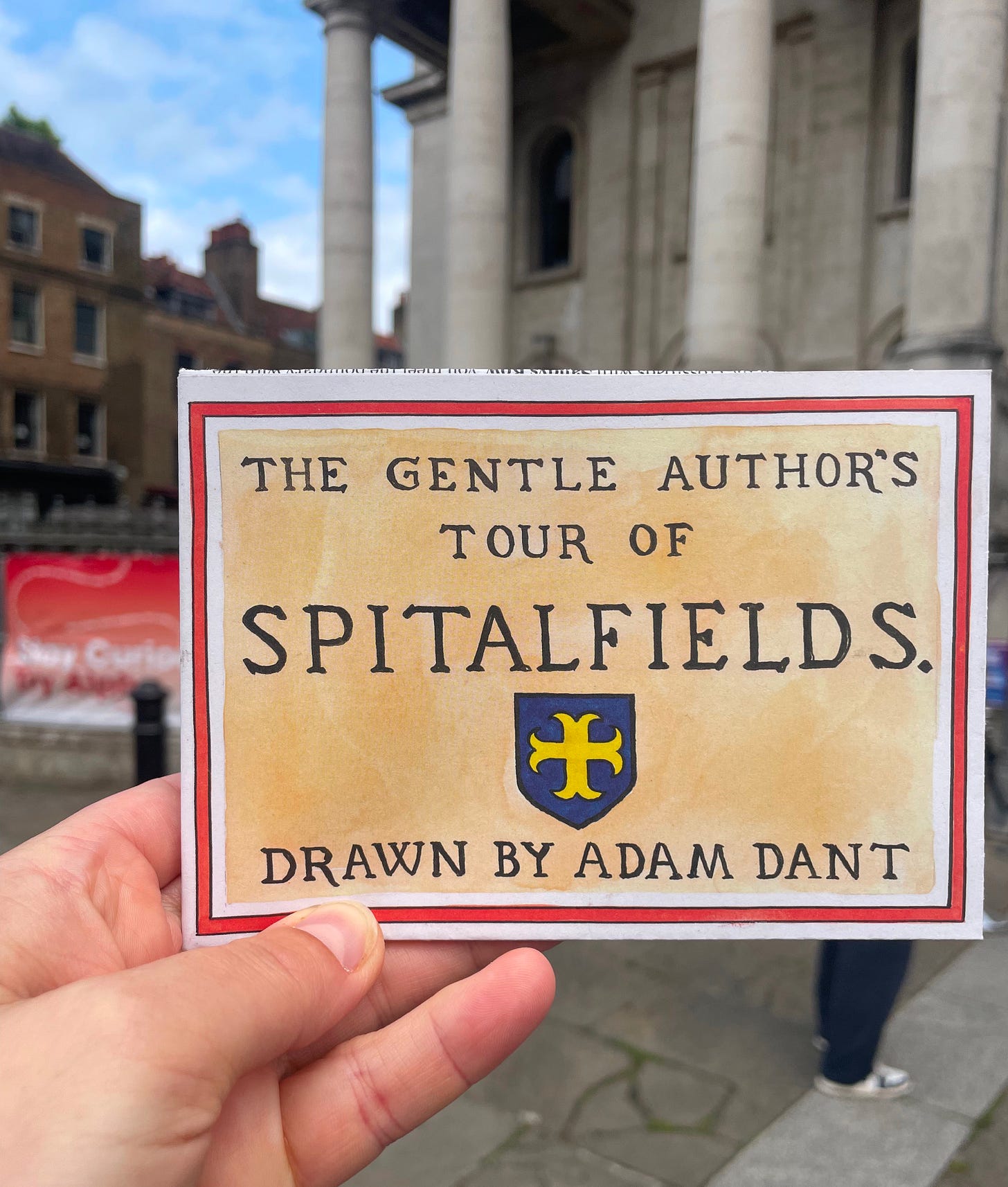
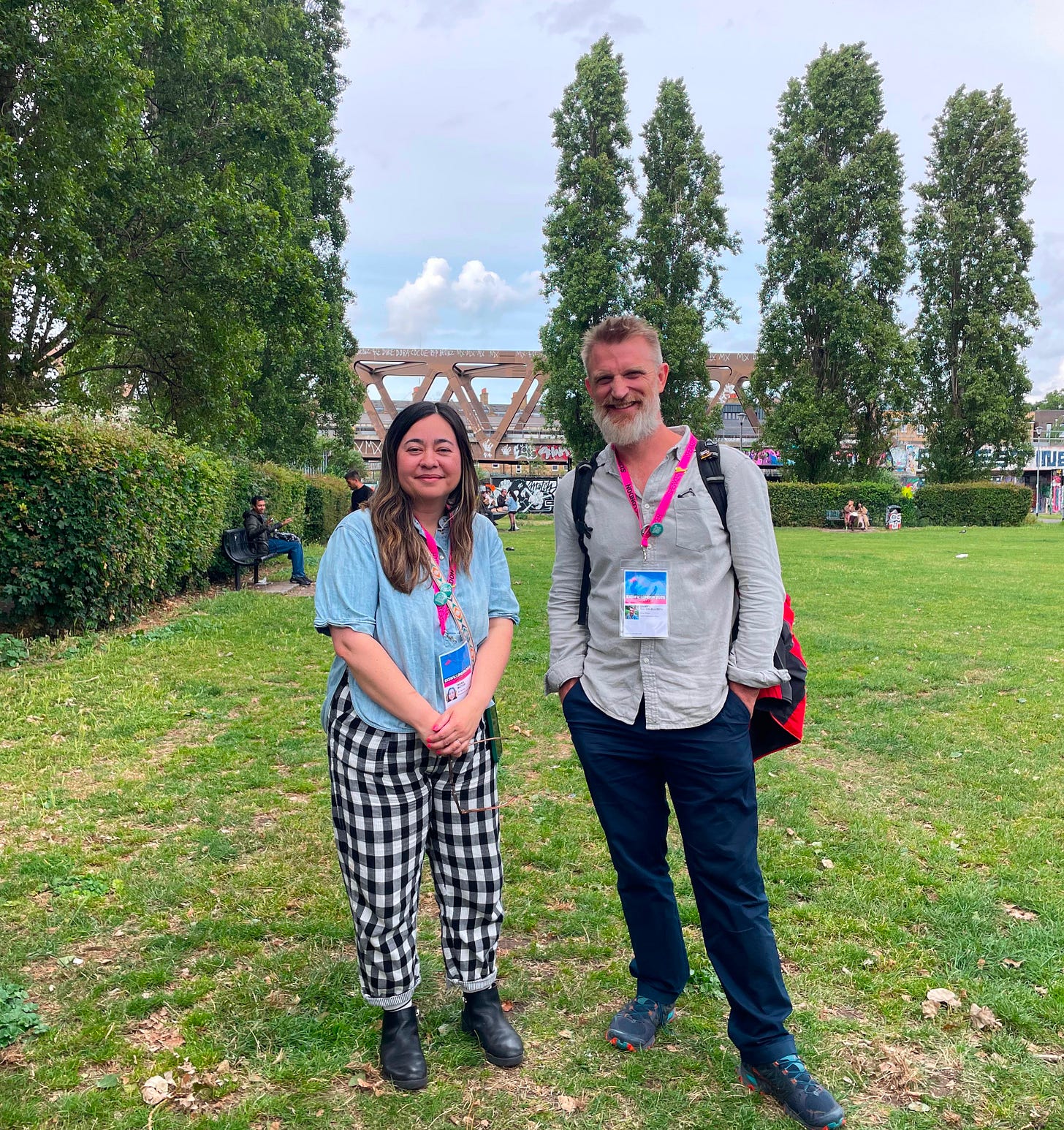
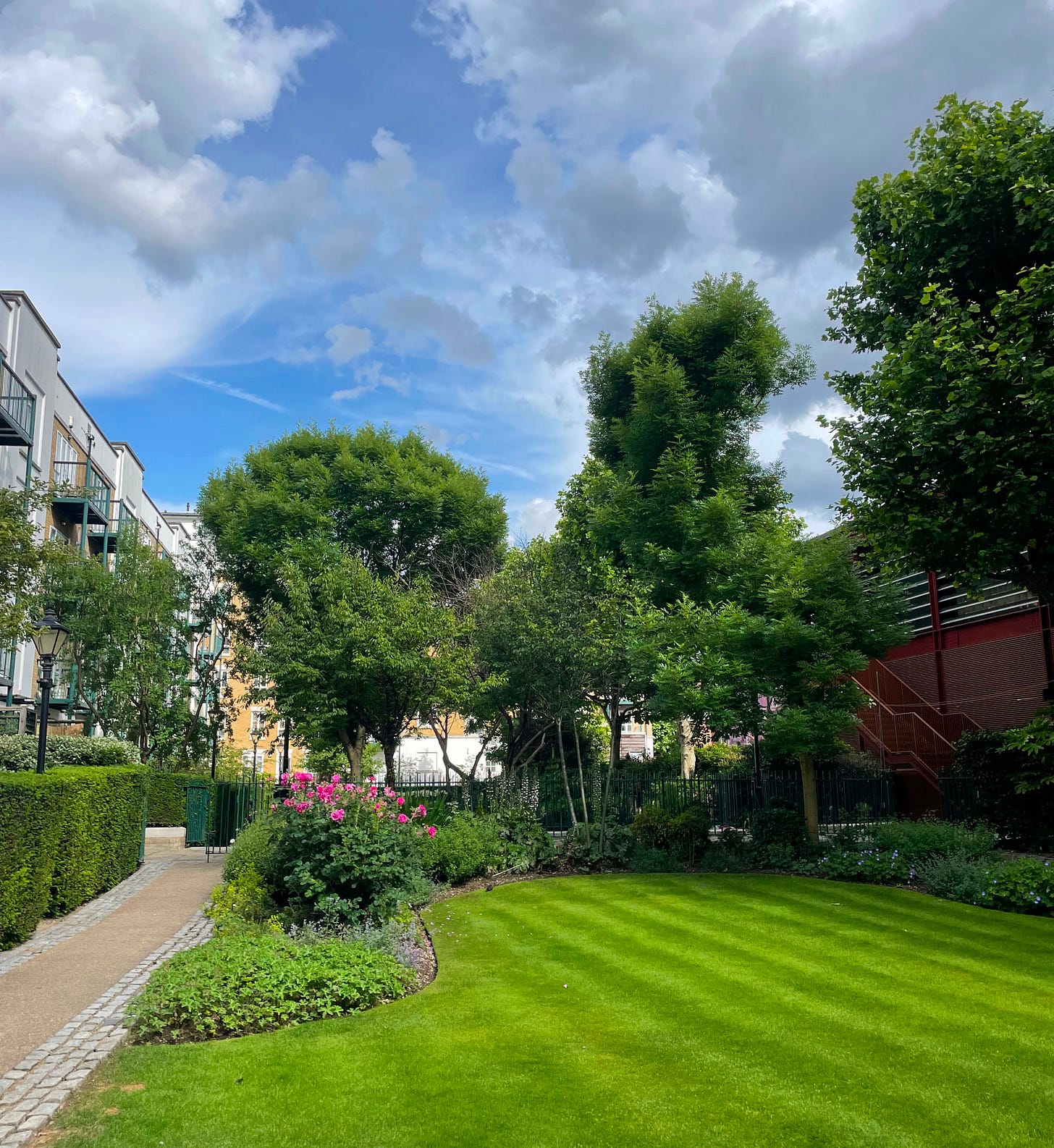

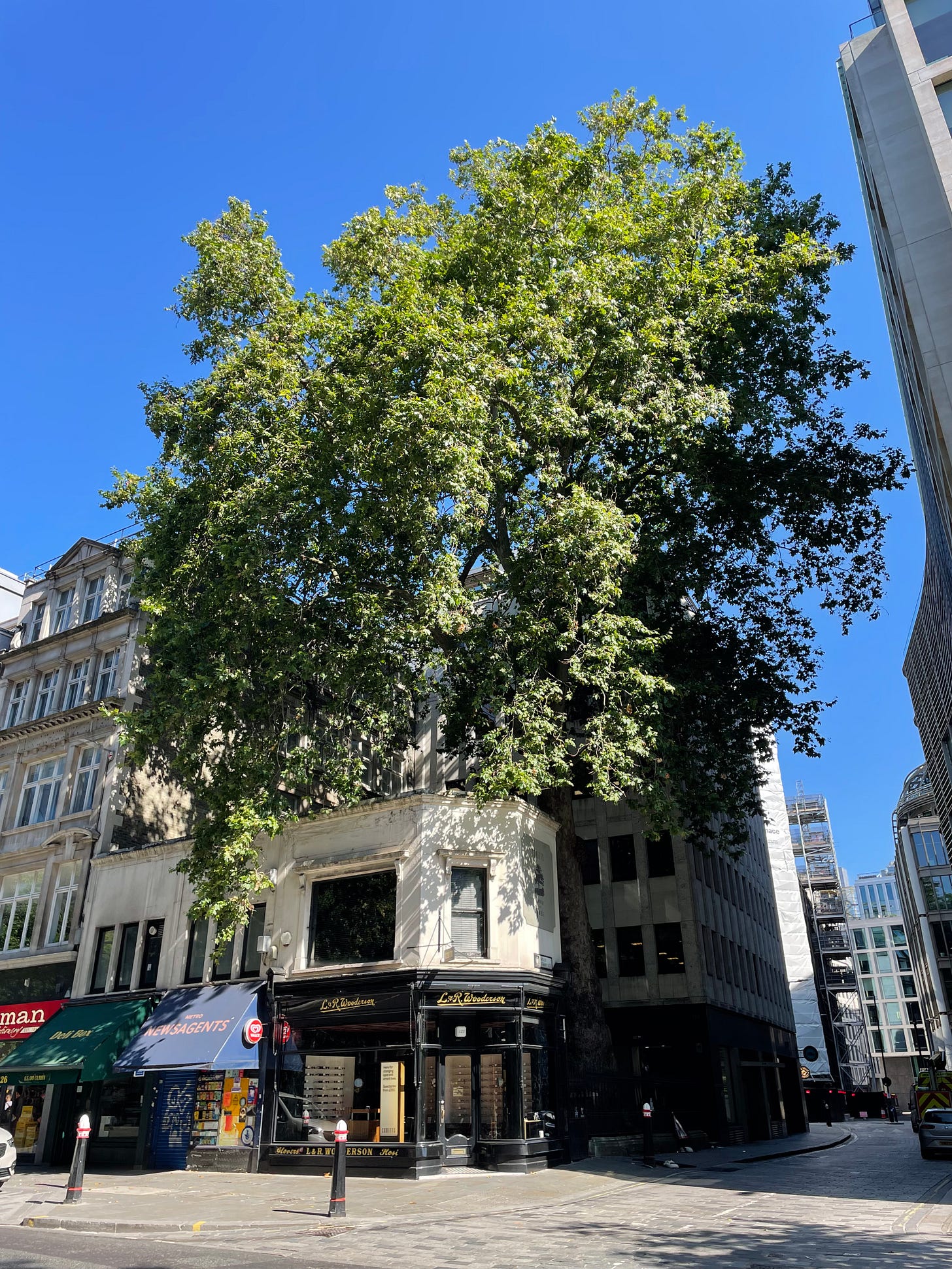
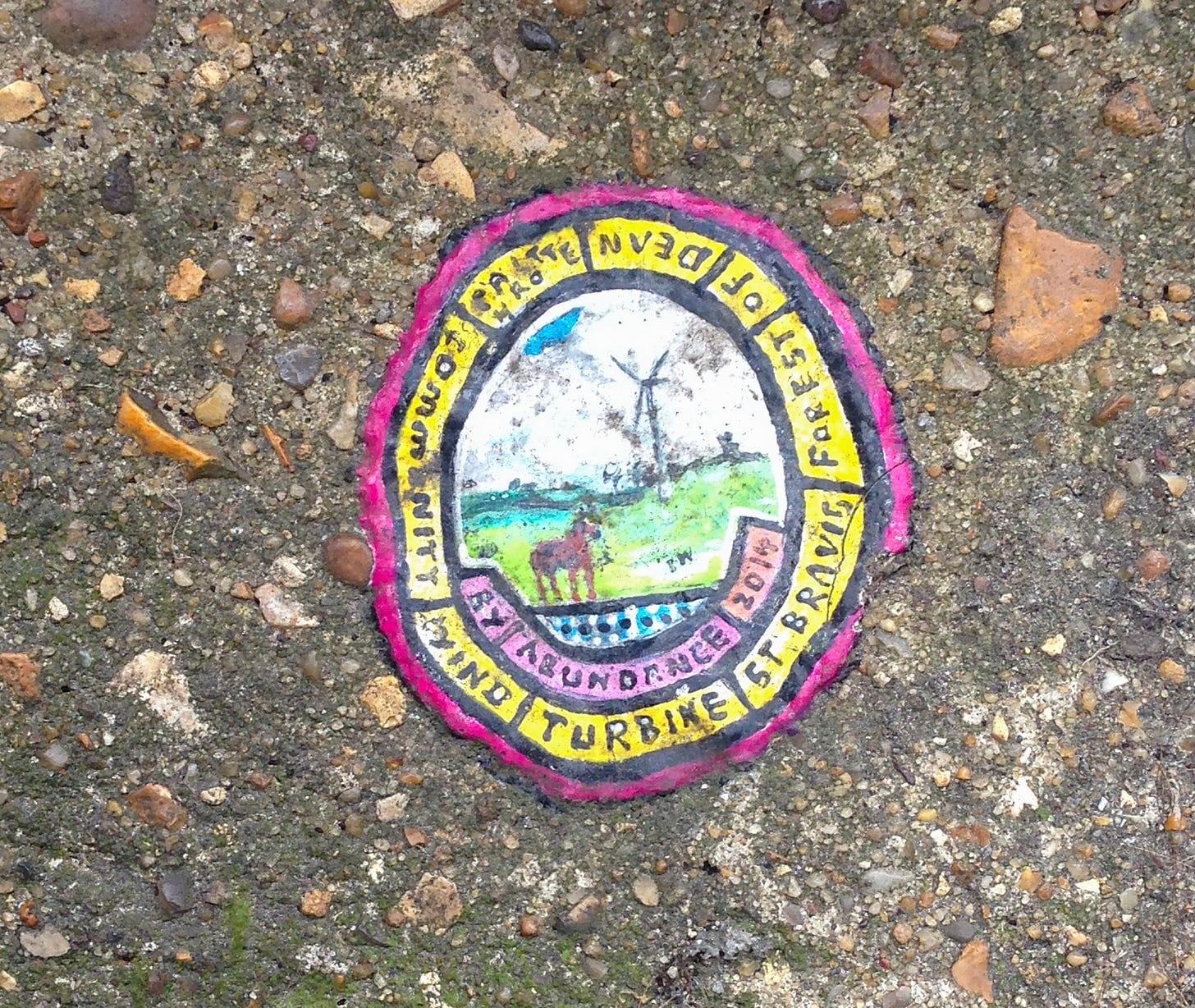
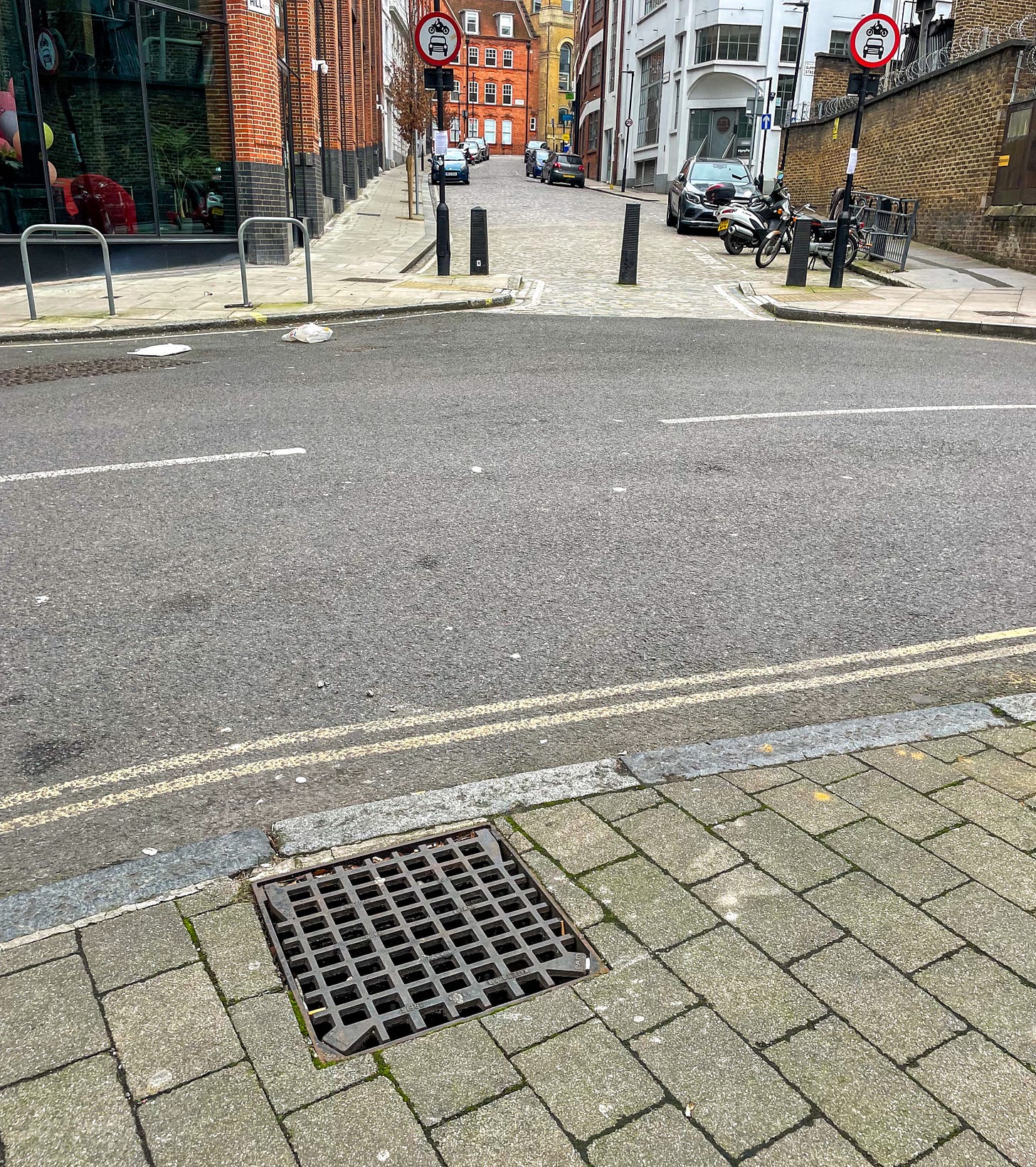
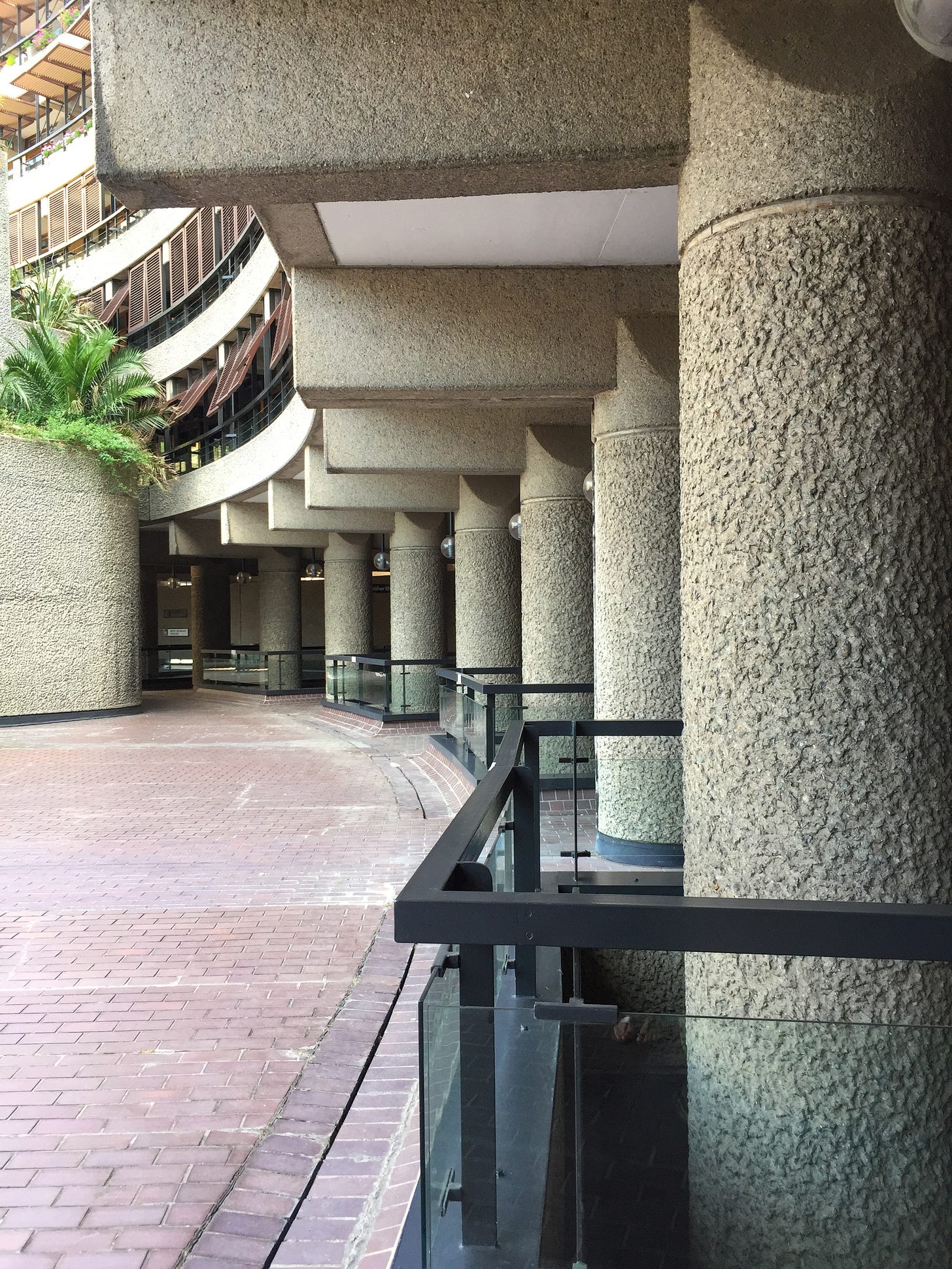
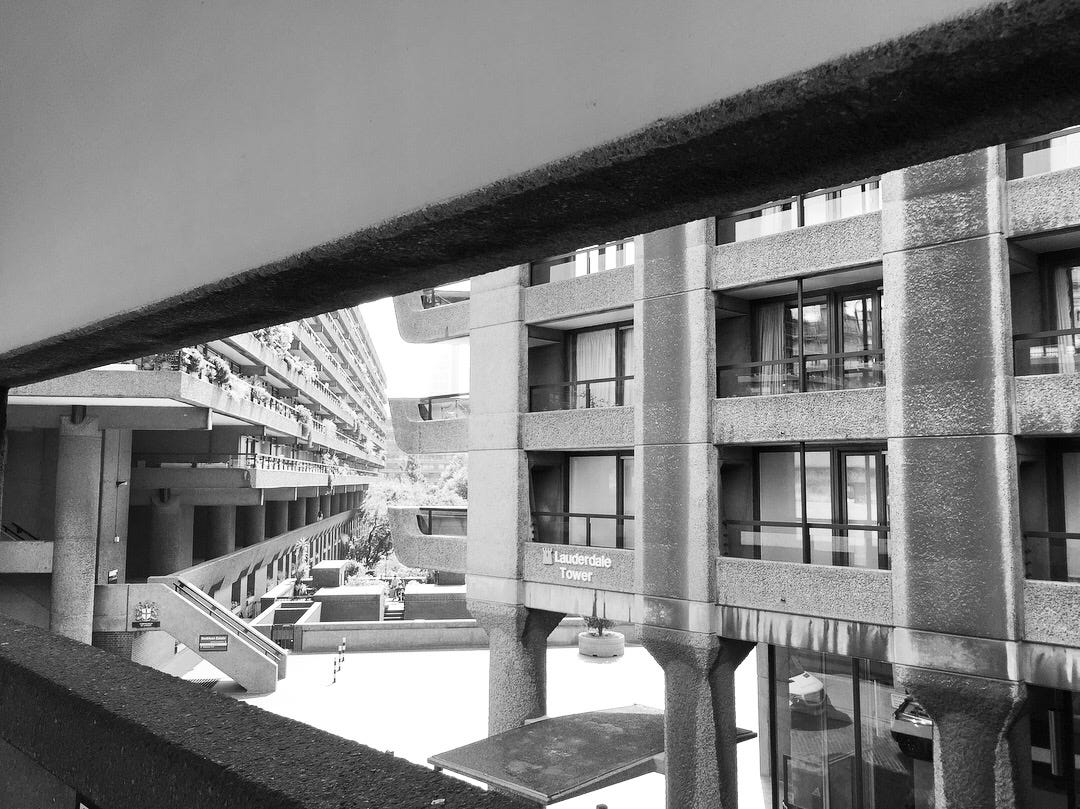
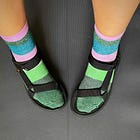
The best city walking tour I ever did (and I do a lot of them) was in Almaty, Kazakhstan about 10 years ago. Instead of the usual city walking tour where guides generally point out "important" buildings and give a bunch of facts and figures, this guide highlighted things you wouldn't necessarily think to notice or ask about, but which helped tell the history of the city and many of which remain important in everyday life. It was absolutely fascinating.